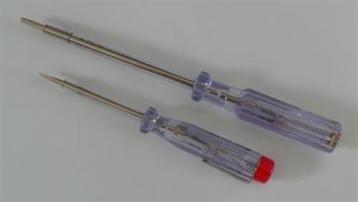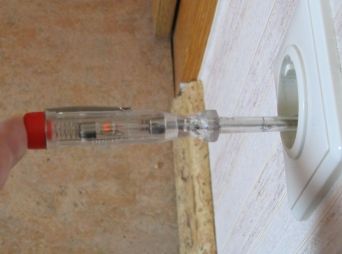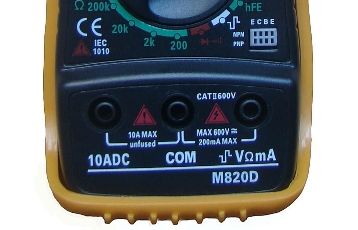Categories: Featured Articles » Novice electricians
Number of views: 489905
Comments on the article: 23
How to find phase and zero? Several methods for detecting phase and neutral wires
In this article, we will consider the question of how to find the phase and zero using a probe and a multimeter.
If it is necessary to service the apartment electricians, in particular the replacement of sockets, lighting switches or minor repairs, it becomes necessary to determine the phase and zero. If a person has some knowledge in the field of the basics of electrical engineering, then it will not be difficult for him to find phase and zero. But what if you do not have these skills? Finding phase and zero is not as complex a process as it might seem. Consider several methods for determining phase and zero.

First, we will determine what phase and zero are. Our entire energy system is three-phase, including low-voltage lines that feed residential buildings and apartments. As a rule, the voltage between any two phases is 380 volts - this is a linear voltage. Everyone knows that the voltage of a household network is 220 volts. How to get this voltage?
For this, in electrical installations with a working voltage of 380 volts, a neutral wire is provided. If you take one of the phases and the neutral wire, then between them there will be a potential difference of 220 volts, that is, this is the phase voltage.
For a person who does not have knowledge in the field of electrical engineering, the above is not very clear. It is important for us to know that in each apartment or house comes one phase and one zero. In detail what phase and zero are considered here.
Consider the first way to determine the phase using a probe (indicator screwdriver). You can read more about the device and the principle of operation of such screwdrivers here - Voltage indicators and indicators in electrical installations up to 1000 V.
So, you have two wires and you need to determine which one is phase and which is zero. Firstly, it is necessary to de-energize them by turning off the circuit breaker that powers this line of electrical wiring.
Then it is necessary to strip both wires, that is, remove 1-2 cm of insulation from it. Stripped conductors need to be slightly diluted so that when a voltage is applied, there is no short circuit as a result of their contact.

The next step is to determine the phase wire. We turn on the machine, through which voltage is applied to the conductors. We take the indicator screwdriver by the handle and with one finger we touch the metal part at the base of the handle.
Remember that it is strictly forbidden to take the probe below the handle, that is, for the working part. We bring the probe to one of the wires and touch it with the working part. In this case, the finger remains on the metal part of the handle.
If the indicator screwdriver light comes on, then this wire is phase, that is, phase. The other wire, respectively, is zero.
If the probe lamp does not light up when you touch the wire, then this is the neutral wire. Accordingly, another wire is a phase, you can check this by touching the indicator screwdriver.

And what if the wiring in the apartment is made with three wires? In this case, you have not only phase and zero, but also ground wire. Using a probe, you can easily determine where the phase is from the three wires.
But how to determine where is zero, and where is the protective conductor, that is, grounding? In this case, one indicator screwdriver is indispensable. Consider the method of determining zero in a three-wire household network.
Determine where zero is, and where is the protective (grounding conductor), using a multimeter. So, we have already identified the phase wire using a probe. We take a multimeter and turn it on to the range of measuring AC voltage of 220 volts and above.
We take two probes of the measuring device and touch one of them to the phase, and the other to one of the two remaining conductors. We fix the voltage value that the multimeter shows.
Then we leave one of the probes in phase, and with the other touch the other wire and again fix the voltage value. When you touch the phase and zero at the same time, the value of the voltage of the household power supply, i.e. approximately 220 volts, will be displayed. If you touch the phase and the protective conductor, then the voltage value will be slightly less than the previous one.
If you do not have a probe, then the phase can also be found with a multimeter. To do this, select the measuring range of the AC voltage value above 220 volts. Two probes are connected to the multimeter in the sockets “COM” and “V”, respectively.
We pick up the probe that is plugged into the socket labeled “V” and touch it with the conductors. If you touch the phase, the device will show a small value - 8-15 volts. When you touch the zero wire, the readings of the device will remain at zero.
We recommend reading: What should I do if the phase of the 220 V sockets on both connectors?
See also at e.imadeself.com
:

